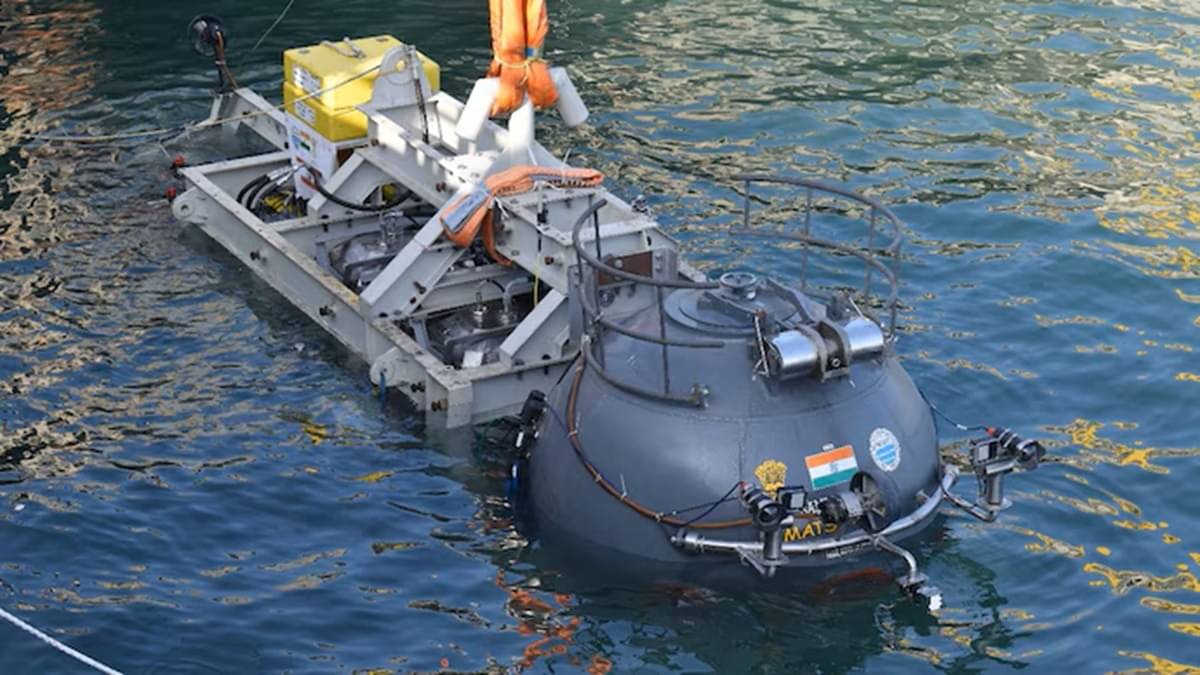Now Reading: Samudrayaan Mission: NIOT To Conduct Matsya-6000 Second Series Harbour Tests For India’s Manned Deep Sea Exploration
-
01
Samudrayaan Mission: NIOT To Conduct Matsya-6000 Second Series Harbour Tests For India’s Manned Deep Sea Exploration
Samudrayaan Mission: NIOT To Conduct Matsya-6000 Second Series Harbour Tests For India’s Manned Deep Sea Exploration

Updated 19 June 2025 at 19:54 IST
Matsya-6000 submersible, part of India’s ambitious Samudrayaan mission — a manned deep sea exploration mission — is set to enter its crucial phase of the second series of harbour tests.

Matsya-6000 submersible set for another test under Samurdrayaan Mission. | Image:
NIOT
Chennai: India’s giant Matsya-6000 submersible for ambitious Samudrayaan Mission is expecting to enter into a crucial phase, as the National Institute of Ocean Technology (NIOT) prepares to conduct a second series of harbour tests in Chennai.
The Controlled Water Trails (CWT) aims to validate the nation’s first indigenous deep-sea submersible system.
NIOT director Balaji Ramakrishnan on Samudrayaan Mission
According to NIOT Director Balaji Ramakrishnan, the upcoming test will prominently feature a newly integrated titanium exoskeleton –a significant leap in the vehicle’s design and safety measure.
The Matsya-6000 submersible, the centrepiece of the Samudrayaan mission is specially designed to carry a three-member crew to deep dive up to 5000 meters for the ocean exploration.
All about first controlled water trail
Earlier this year, the NIOT completed the maiden harbour wet test at Kattupalli Port near Chennai, which included manned and unmanned dives to assess ECLSS (Environmental Control and Life Support System) such as power, control, flotation, stability and life support systems.
All the initial trials validated the core design of the submersible. However, these trials also highlighted the gaps that needed to be improved especially when the mission was about to move forward into deeper and more demanding underwater environments.
Meanwhile the second wet test aims to integrate the performance of the new titanium exoskeleton, which is likely to enhance the submersible’s structural integrity and resilience under the extreme pressure.
Collaboration with ISRO
In collaboration with ISRO, the titanium personal sphere is being developed with an advanced welding process at the Vikram Sarabhai Space Centre, a technological feat given the sphere’s 80mm thickness will help in its durability to withstand extreme pressure, specifically the kind of the pressure which is 6,000 metres below the sea level.
The advancement in welding and fabrication of the critical component are ongoing with the rigorous pressure which is being tested in Russia for the safety and rateability purposes.
What NIOT says on Samudrayaan mission
NIOT officials highlights the need of these controlled water trails for the understanding of the real-world performance of indigenous systems and for the validation of the new technologies before entering into the deep sea levels.
The following trails results will inform the final preparations for the mission’s landmark 500-meter and eventual 5,000-meter crewed dives, which aim to position India at the place of selected nations capable of deep-sea human exploration.
Published 19 June 2025 at 19:54 IST























